Ultrasound Interactive Case Study: Conservative Treatment in Placenta Accreta and Percreta
This series describe an innovative approach for anterior placenta percreta surgery. The procedure has been developed in Argentina and is intended to limit obstetric bleeding and hysterectomy incidence. Though definite results will be reported later, a uterine preservation rate of about 90% with a mean transfusion need of 1000 ml has been achieved.
Ultrasound Findings
SURGICAL SERIES
Surgical Team: Jos M Palacios Jaraquemada MD Ph.D; Mario Pesaresi MD Ph.D, Juan Carlos Nassif MD, Susana Hermosid MD; Rodrigo Zlatkes; Silvina Bozzini; Mara Laura Sueldo MD. Surgical Assistant: Natalia Mara Casoetto.
Place of work: Durand Hospital, Obgyn Department; Buenos Aires, Argentina
SURGERY
This series describe an innovative approach for anterior placenta percreta surgery. The procedure has been developed in Argentina and is intended to limit obstetric bleeding and hysterectomy incidence. Though definite results will be reported later, a uterine preservation rate of about 90% with a mean transfusion need of 1000 ml has been achieved.
Patient selection, based on risk from repeated cesarean section, and uterine procedures and surgery, was the obstetrician's responsibility. In these cases, a comprehensive preoperative assessment, including abdominal and transvaginal ultrasonogram, placentary magnetic resonance imaging, and coagulation tests, was performed.
After placenta percreta was diagnosed, if no contraindications were found, surgery during the 35th week was planned. The surgical team decided the appropriate strategy.
An median infra-umbilical incision with a small supra-umbilical extension, allowed to bring forward the uterus and perform a fundic hysterectomy. After the baby was delivered, the infrarenal abdominal aorta was isolated and a loop was placed (proximal vascular control). Subsequently, all newly formed vessels between the uterus and placenta were isolated and ligated to completely release both vesicouterine and vesicocervical spaces. The aortic loop was secured and the placenta removed. Uterine arteries were selectively ligated. After the uterine cavity was cleared, the anterior wall was repaired using a reabsorbable mesh, collagen, and fibrin glue. Finally, the uterus and bladder were set apart by an anti-adhesive layer. The aortic loop was removed, the pelvis was drained, and the abdominal wall was closed.
Long-term postoperative results were excellent, with optimal tissue repair. Patients have been able to bear other children uneventfully. Protracted ileum (3-4 days) was the most frequent postoperative complication.
Additional figures show other dissection stages and predisposing factors (uterine segment injury secondary to repeated cesarean section).
Uterus brought forward through a median incision (lateral view).
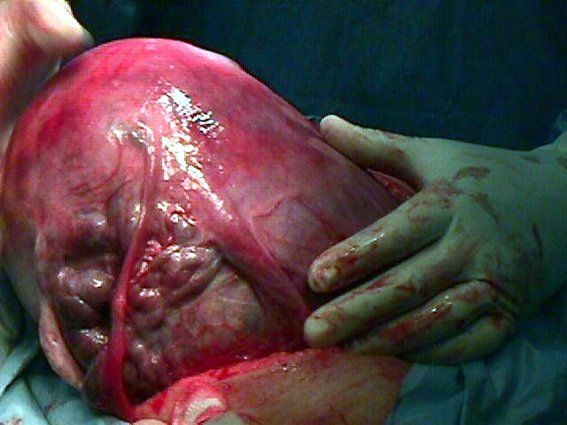
Uterine opening by fundic hysterectomy.
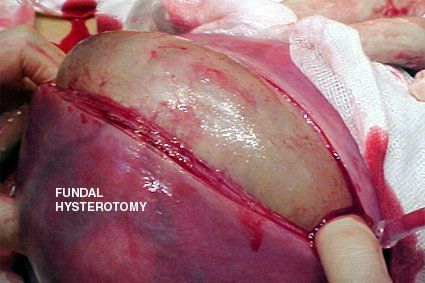
Image obtained 20 minutes after delivery. Note that if the placenta is not dislodged, bleeding does not occur.
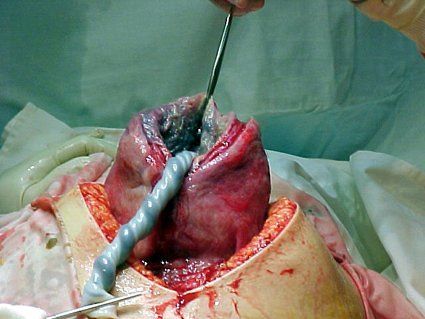
Retroperitoneal dissection to separate the aorta from the inferior vena cava. This crucial maneuver should be performed before the aortic loop is placed.
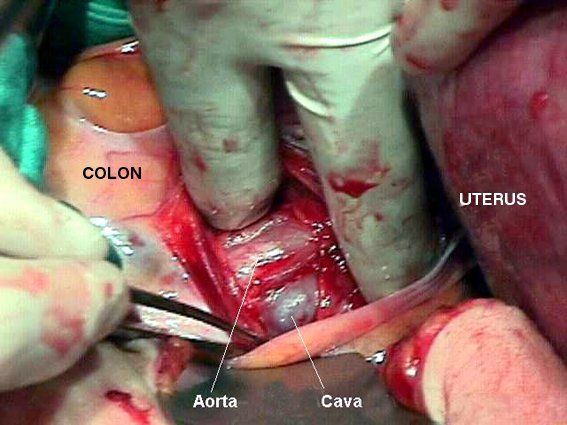
Between the aortic aortic bifurcation and fourth lumbar artery, a #7 silk loop has been placed.

Massive placenta percreta (lateral view). Initial ligation to separate the bladder from the uterus is shown. This maneuver should be performed with the aortic loop in place but not secured.
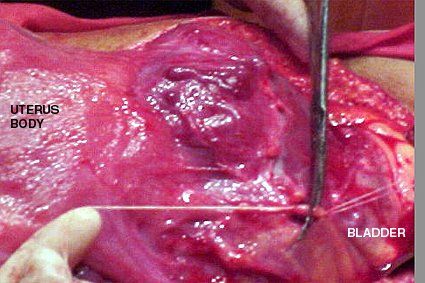
Dissection proceeds between both round ligaments to allow an uneventful parametric approach (anterolateral view).
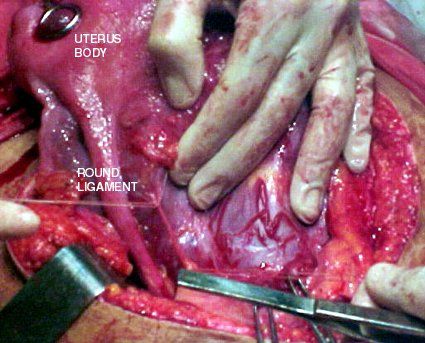
All newly formed vessels have been ligated; as these vessels have no muscle layer, they are not suitable for electrocauterization.
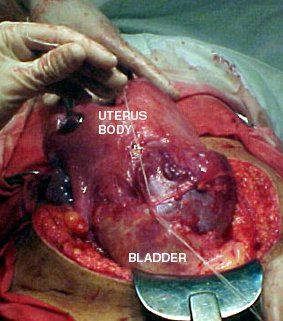
Detailed view of newly formed vessels between the bladder and placenta. These vessels should be identified and ligated to appropriately separate the bladder from the uterus.
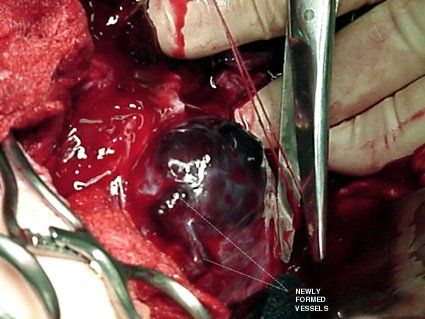
Detailed view of a newly formed vessel ligation. This maneuver allows a proper vesical and uterine detachment.

Vesical and uterine division is shown. At this stage, all newly formed vessels should be meticulously ligated.

To cover the uterine defect, a reabsorbable mesh is used. When fixed, it will allow an accurate uterine repair and prevent postoperatory injuries.
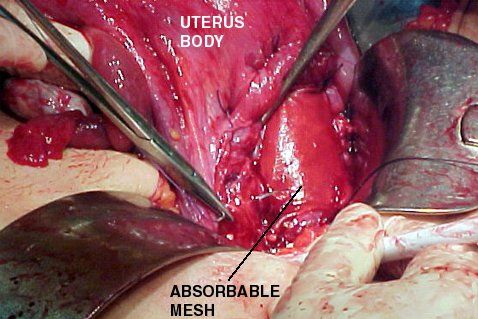
Under temporary aortic clamping, the placenta is safely removed. Through the uterine defect, the surgeon's fingers are clearly seen. Note the extensive vesical displacement.

A muscular defect resulting from placenta previa is shown. In these cases, defects are also repaired with a mesh.
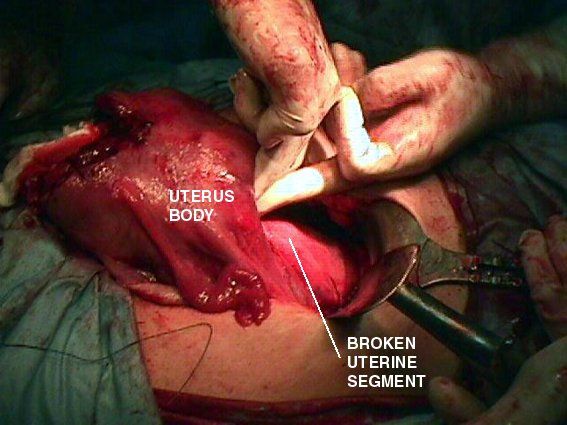
A defect caused by repeated cesarean sections is shown. To visualize this area a wide vesical mobilization is needed.
Sutures are placed on a second layer. At this stage, collagen and fibrin glue are used.
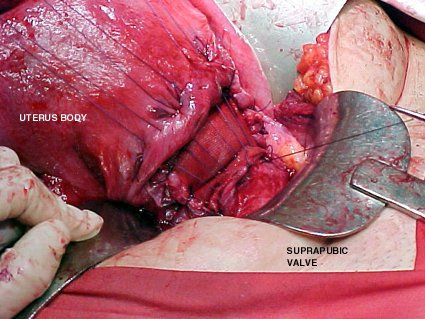
After the second layer has been closed, uterine repair is performed.
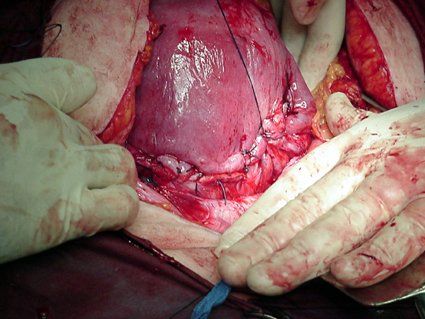
Last layer, with regenerated cellulose between the bladder and repaired uterus.

Two-layer fundic hysterectomy closure.
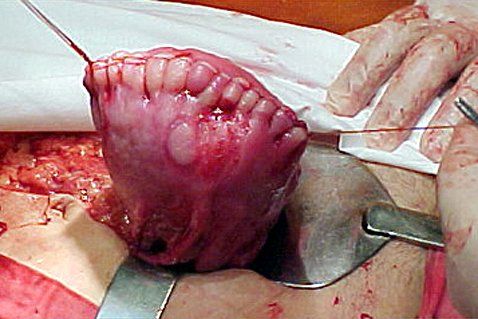
MRI showing a satisfactory uterine repair, three months after surgery for placenta percreta with bladder invasion.
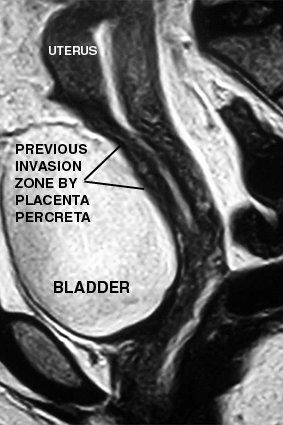
Also by Jos M Palacios Jaraquemada MD Ph.D
Differential Diagnosis of the Placental Adhesive Disorders by Contrasted Nuclear Magnetic Resonance & Ultrasound - Placenta Accreta and Percreta
